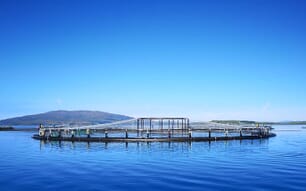A summary of the review - A framework for a sustainable future for finfish aquaculture in Scotland – was published by SEPA this week, and includes a number of draft proposals on new regulations regarding the use of sea lice treatments and the location and scale of future marine finfish sites.
Residues from sea louse medicines
Most worryingly for the salmon industry, SEPA has promised to tackle the residues from sea louse medicines “head-on” and, following the findings of a Scottish Aquaculture Research Forum (SARF) study into the impacts of the in-feed sea louse medicine Emamectin Benzoate (commonly used under the brand name SLICE), they commissioned a second study – an independent review of the Environmental Quality Standard (EQS) for Emamectin Benzoate. The latter found that marine organisms may be considerably more sensitive to the treatment, and may be affected by much lower concentrations, than previously believed.
As a result, SEPA is now “asking operators [of existing sites] to reduce their application of Emamectin Benzoate by 60%”.
This interim decision has been hailed by Scott Landsburgh, chief executive of the Scottish Salmon Producers Organisation (SSPO), as “bizarre” and a sign of “chaos”.
In response to the news he said: “No business can operate successfully in this sort of chaos. If the Scottish Government and its agencies want to deter investment, put jobs and economic benefit in jeopardy this is certainly the right way to go about it. SEPA have introduced immediate regulatory changes with no consideration of the social and economic impact despite being legally required to do so.”
Benthic waste
The dispersal of wastes was the other major issue of concern for SEPA and, in order to move away from siting of cage farms in sheltered areas with restricted tidal flows which limit the dispersal of wastes, SEPA now aims to increase the incentive to operate in more exposed locations – potentially lifting the upper limit of fish biomass allowed at a single site to over the current level of 2,500 tonnes.
As the report explains: “SEPA wants to make it more attractive to develop fish farms in more exposed locations where the risks to the sea bed are reduced. This will help give the sector confidence in making investment decisions to operate where the environmental risk is reduced.”
To do this they are proposing to revise “the way we control the amount of waste a fish farm can release, through a new approach called Depositional Zone Regulation (DZR)”.
The report continues: “under this new approach it would be possible for fish farms to progressively increase their stocking above a starting biomass determined using the updated computer model, but DZR will ensure that growth occurs only where the combination of appropriate siting, and new techniques and processes, mean the environment can sustain it”.
Next steps
The final decisions on issues such as the EQS for SLICE and the implementation of DZR will depend on the results of a new consultation, the findings of which are expected to be published in early 2018.
SEPA is encouraging participation in this consultation process and all the relevant documents are available on their website.




